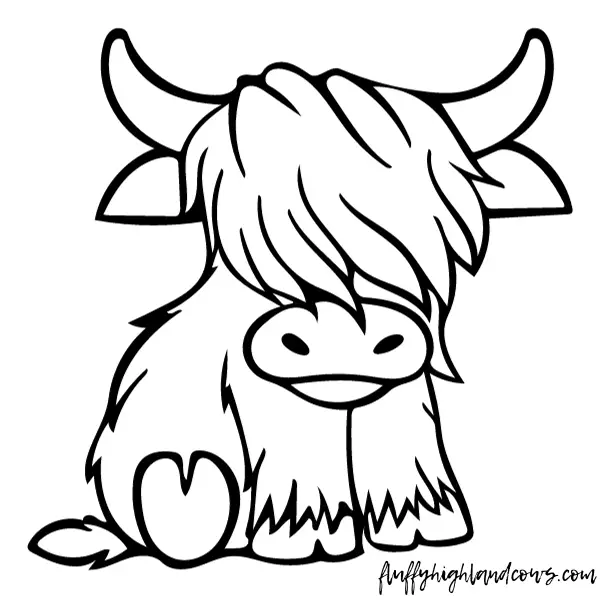The Art of Rotational Grazing for Highland Cattle
Rotational grazing is a time-tested agricultural practice that has proven its worth in optimizing pasture health, cattle well-being, and farm sustainability. In this article, we will delve into the intricacies of rotational grazing, a system that ensures Highland cattle are nourished, pastures flourish, and the land thrives.
The Principles of Rotational Grazing
Rotational grazing is a system that involves dividing pastures into smaller paddocks and systematically moving cattle from one paddock to another. This method is employed from late spring through December to maximize the benefits for both cattle and the land.
At the heart of this system are well-constructed fences. The perimeters of the pastures are equipped with multiple strands of electric fence, often using high tensile wire for durability. Temporary paddocks are created using single strands of poly wire, which consists of fine strands of copper or aluminum wire wound with plastic strands to provide both strength and flexibility.
To facilitate the smooth movement of cattle between paddocks, a “tumble wheel” system is employed. Geared reels at each end of a single wire are used to create two sets of wheels per paddock. One set of wheels is placed in front of the cattle as they move into new grazing areas, and the other set follows the cattle, preventing them from returning to recently used paddocks. Remarkably, even with fences stretching up to 1000 feet, one person can easily manage the relocation of the cattle.
Daily Rotation for Health and Sustainability
The key to successful rotational grazing is the daily movement of cattle from one paddock to another. The size of each paddock is adjusted based on factors such as the number of animals in the herd, the quality of the pasture, and the farm’s schedule. This constant movement serves multiple purposes:
- Pasture Health: Rotational grazing prevents the plants from being excessively grazed down to the ground. This practice allows for a shortened recovery time for the plants, ensuring they remain healthy and productive.
- Soil Enrichment: As cattle graze, they trample uneaten forage into the ground. This adds valuable biomass to the soil, aiding in soil health and fertility.
- Root Preservation: By leaving a significant portion of the plant above ground, the roots of the plants remain intact. This is crucial for the plant’s ability to regrow and contribute to the overall pasture ecosystem.
- Nutrient Management: At times when the plants may be overly lush and lack nutrients, such as in the early fall with increased rainfall, dry hay is provided as a supplement to help the cattle balance their diet.
The cattle are typically divided into two grazing groups: the steer herd (including the bull outside of breeding times) and the cow herd. Occasionally, young heifers or weanlings are grouped separately for management purposes.
Pasture Diversity and Crop Rotation
The pastures are a diverse mix of plants, including alfalfa, clover, orchard grass, Timothy, rye (various types), fescue, and various other species. New pastures start as an alfalfa mix, but as the alfalfa diminishes, the fields are replenished with clovers, other hay species, and grasses. However, it’s important to note that alfalfa plants produce toxins that prohibit reseeding alfalfa without first eliminating the existing crop, requiring temporary crops to be planted before returning to alfalfa.
No-till methods are practiced whenever possible, reducing soil disturbance and erosion while preserving soil health.
Extending the Grazing Season
To extend the grazing season beyond late fall when most pastures go dormant, annuals are planted. Two paddocks are planted with a variety of cold-tolerant crops, including radishes, turnips, snow peas, clovers, oats, rye, and others. These paddocks serve as late fall and early winter grazing areas.
Initially, cattle consume the tops of the plants, followed by the radishes and turnips. While some plants may return in the spring, these paddocks require reseeding or replanting to remain productive in the summer. These areas are also referred to as “sacrifice” areas, as they endure significant wear and tear during the winter, resulting in concentrated manure.
This manure contributes to the soil’s fertility, eliminating the need for commercial fertilizer. The plan is to rotate these sacrifice areas every two or three years to improve different parts of the land.
Winter Feeding Strategies
During the winter, a feeding strategy is employed that ensures cattle are nourished and the land remains productive. Cattle are fed dry hay, which is cut and baled in the pastures, or baleage, a product of pastures that are baled with higher moisture content and wrapped in plastic for fermentation. Both forms of feed are sourced from the farm’s own fields.
While baleage production is more labor-intensive, it retains more nutrients compared to dry hay. However, once the baleage is exposed to air, it begins to deteriorate. Dry hay, on the other hand, lasts longer, especially when stored indoors. In case of drought, having dry hay in reserve is advisable.
In the spring, when cattle transition to fresh pastures, offering dry hay alongside fresh grass helps the cattle’s rumen adjust to the new feed. In the winter, hay and baleage are unrolled on the ground using a round bale un-roller. This method eliminates the need for round bale feeders, prevents ground damage, and ensures that all cattle can access the feed simultaneously.
Sustainable Farming Through Rotational Grazing
Rotational grazing is more than just a farming practice; it’s a sustainable, holistic approach that benefits both cattle and the land. The success of rotational grazing systems highlights the importance of careful planning, diverse pastures, and a commitment to soil health. By implementing these principles, farms can ensure that their Highland cattle thrive on a diet of fresh grass, hay, and baleage, while simultaneously enriching the soil and preserving the land for future generations.

